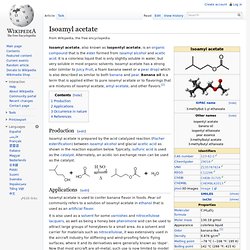

Labdanum. Labdanum, also called ladanum or ladan, is a sticky brown resin obtained from the shrubs Cistus ladanifer (western Mediterranean) and Cistus creticus (eastern Mediterranean), species of rockrose.

It has a long history of use in herbal medicine and as a perfume ingredient. History[edit] In ancient times, labdanum was collected by combing the beards and thighs of goats and sheep that had grazed on the cistus shrubs.[1] Wooden instruments used were referred to in 19th-century Crete as ergastiri;[2] a lambadistrion ("labdanum-gatherer") was a kind of rake to which a double row of leathern thongs were fixed instead of teeth.[3] These were used to sweep the shrubs and collect the resin which was later extracted.
It was collected by the shepherds and sold to coastal traders. Many of the false beards worn by the pharaohs of ancient Egypt were made of goats' hair [4] which was held together by labdanum.[5][6][7][8] The resin was also used to treat colds, coughs, menstrual problems and rheumatism. Castoreum. Castoreum Castoreum /kæsˈtɔriəm/ is the exudate from the castor sacs of the mature North American Beaver (Castor canadensis) and the European Beaver (Castor fiber).

Within the zoological realm, castoreum is the yellowish secretion of the castor sac which is, in combination with the beaver's urine, used during scent marking of territory.[1][2] Both male and female beavers possess a pair of castor sacs and a pair of anal glands located in two cavities under the skin between the pelvis and the base of the tail.[3] The castor sacs are not true glands (endocrine or exocrine) on a cellular level, hence references to these structures as preputial glands or castor glands are misnomers.[4] Castor sacs are a type of scent gland.
Isoamyl acetate. Isoamyl acetate, also known as isopentyl acetate, is an organic compound that is the ester formed from isoamyl alcohol and acetic acid.

It is a colorless liquid that is only slightly soluble in water, but very soluble in most organic solvents. Isoamyl acetate has a strong odor (similar to Juicy Fruit, a foam banana sweet or a pear drop) which is also described as similar to both banana and pear. Banana oil is a term that is applied either to pure isoamyl acetate or to flavorings that are mixtures of isoamyl acetate, amyl acetate, and other flavors.[2] Production[edit] Isoamyl acetate is prepared by the acid catalyzed reaction (Fischer esterification) between isoamyl alcohol and glacial acetic acid as shown in the reaction equation below. Applications[edit] Isoamyl acetate is used to confer banana flavor in foods. Because of its intense, pleasant odor and its low toxicity, isoamyl acetate is used to test the effectiveness of respirators or gas masks.
Vanillin. Vanillin is a phenolic aldehyde, which is an organic compound with the molecular formula C8H8O3.

Its functional groups include aldehyde, hydroxyl, and ether. It is the primary component of the extract of the vanilla bean. Synthetic vanillin, instead of natural vanilla extract, is now more often used as a flavoring agent in foods, beverages, and pharmaceuticals. Vanillin and ethylvanillin are used by the food industry; ethylvanillin is more expensive, but has a stronger note.
It differs from vanillin by having an ethoxy group (–O–CH2CH3) instead of a methoxy group (–O–CH3). Natural "vanilla extract" is a mixture of several hundred different compounds in addition to vanillin. Vanillin crystals extracted from vanilla extract. History[edit] Vanilla was cultivated as a flavoring by pre-Columbian Mesoamerican people; at the time of their conquest by Hernán Cortés, the Aztecs used it as a flavoring for chocolate. Supercritical carbon dioxide. Carbon dioxide pressure-temperature phase diagram Supercritical carbon dioxide is a fluid state of carbon dioxide where it is held at or above its critical temperature and critical pressure.

Uses[edit] Solvent[edit] Carbon dioxide is gaining popularity among coffee manufacturers looking to move away from some of the classic decaffeinating solvents of the past, many of which have led to public outcry because of real or perceived dangers related to their use in food preparation. Supercritical CO2 is forced through the green coffee beans which are then sprayed with water at high pressure to remove the caffeine. Supercritical carbon dioxide can also be used as a more environmentally friendly solvent for dry cleaning as compared to more traditional solvents such as hydrocarbons and perchloroethylene.[2] Solid-phase microextraction. Solid-phase microextraction, or SPME, is a sample preparation technique used both in the laboratory and on-site.

Developed in the early 1990s at the University of Waterloo by Dr. Pawliszyn's group, it is a simple and inexpensive technique where the use of solvents is not necessary. The attraction of SPME is that the extraction is fast and simple and can be done usually without solvents, and detection limits can reach parts per trillion (ppt) levels for certain compounds. SPME also has great potential for field applications; on-site sampling can be done even by nonscientists without the need to have gas chromatography-mass spectrometry equipment at each location. When properly stored, samples can be analyzed days later in the laboratory without significant loss of volatiles. Books[edit] References[edit] Jump up ^ Mitra, Somenath, ed. (2003).